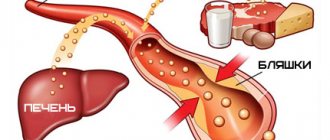When measuring pressure, each indicator on the tonometer monitor is important. The first value is systolic pressure, which depends on the strength and frequency of heart contractions. The second is diastolic pressure. It demonstrates blood pressure at rest (diastole) and directly depends on the degree of resistance of the peripheral arteries. If the upper value is called cardiac, then the second is renal. This is due to the fact that the tone of the arteries is formed by renin, a substance secreted by the kidneys. What to do if the lower value is increased or decreased, and what disorders in the body can this indicate?
How to measure blood pressure correctly?
Measuring blood pressure is a mandatory procedure for hypertensive or hypotensive patients. But it’s not enough to buy a high-quality semi-automatic or automatic device. It is necessary to correctly measure blood pressure (blood pressure) and interpret the results at home. To do this you should:
- do not eat or drink tonic drinks half an hour to an hour before the procedure;
- do not smoke before measuring blood pressure for 30–60 minutes;
- exclude physical activity, including brisk walking or climbing stairs;
- take a comfortable position by sitting on a chair with a backrest and placing your arm bent at the elbow on the table (the cuff should be at heart level);
- do not make sudden movements or talk during the diagnostic procedure;
- record the results obtained in a special journal, indicating in it not only pressure indicators, but also heart rate, as well as the time of measurement.
Important! Not only the increase or decrease in systolic and diastolic indicators, but also the difference between them are taken into account. The diagnosis and treatment regimen may depend on this.
Normal diastolic pressure
The optimal values of cardiac and renal pressure directly depend on a person’s age, gender, lifestyle, and weight. But if we talk about the average indicators of lower pressure, they are as follows:
- 90 mmHg Art. – upper limit of normal;
- 91-105 mm Hg. Art. – arterial hypertension at the initial stage;
- 106-115 mm Hg. Art. – hypertension of the second severity;
- above 115 mm Hg. Art. – severe stage of hypertension;
- 130 mmHg Art. – a malignant form of hypertension that is practically uncorrectable.
Normal blood pressure by age – from birth to 64 years and older
Danger
An increase in lower pressure often has no symptoms, and a person does not even know about it. They may be discovered during a routine examination or when visiting a doctor for other reasons. There is a misconception that only elevated upper blood pressure threatens health and life, but in fact, an increase in lower blood pressure is no less dangerous. The heart in this state is constantly tense and practically does not relax. The blood flow in it is disrupted, the disease progresses, structural changes begin to occur, which ultimately become irreversible.
It is important to know that high lower blood pressure cannot be ignored. It leads to organ dysfunction and, without treatment, can result in death within six months. There is a high risk of developing thrombosis, heart attacks, and strokes.
Reasons for the growth of indicators
Increased diastolic pressure is most often accompanied by an increase in systolic pressure with a pulse difference of about 40 mmHg. Art. This may be due to both physiological factors, such as overwork, stress, changing weather conditions, overeating, hypothermia, etc., and to a number of serious pathological processes, namely:
Why is low blood pressure high?
- hormonal disorders;
- problems in the functioning of the heart, both congenital and acquired;
- poisoning;
- allergic reactions;
- atherosclerosis;
- changes in blood composition;
- tumor processes.
Increased blood pressure is typical for women during pregnancy and menopause. This is a normal reaction of the body to changes and hormonal fluctuations occurring in it. The risk group for developing hypertension includes people who lead a sedentary lifestyle, do not adhere to generally accepted dietary rules, consume large amounts of salt, smokers and alcoholics.
The symptoms of hypertension at the initial stage are blurred and are usually mistaken by a person for banal fatigue at work. Later, as the disease develops, high blood pressure is accompanied by:
- severe headaches;
- the appearance of black spots before the eyes;
- nausea;
- weakness;
- chest pain that gets worse with exercise;
- shortness of breath;
- feelings of anxiety and panic.
When the pulse difference is low (20 mmHg), this indicates that diastolic blood pressure is increasing without reference to the upper one. This picture is typical for diseases of the kidneys, thyroid gland and adrenal glands.
Features of pulse pressure
The term refers to the difference between systole and diastole. It shows the patency of blood vessels and the general condition of their internal membranes. The ideal difference between the two values should be 60 mmHg; a larger gap in the data indicates vascular spasm or inflammatory processes occurring in the blood vessels.
A greatly reduced level of pulse blood pressure is considered characteristic of certain pathologies, represented by:
- heart failure;
- stroke in the left ventricle of the heart;
- myocardial infarction.
If deviations from standard sizes within 40-55 units are detected, you must consult a cardiologist. The doctor will issue a referral for a laboratory diagnostic examination, and after clarifying the presumptive diagnosis, he will prescribe therapy in accordance with the detected disease.
Why does blood pressure decrease?
Not only increased diastolic pressure is a dangerous symptom. A decrease in this value may also indicate problems with the body. Among the main reasons for the indicator to fall below normal:
- diabetes mellitus and other endocrine pathologies;
- diseases of the heart and blood vessels (coronary heart disease, bradycardia, myocarditis, aortic valve disease, history of heart attack);
- kidney diseases;
- oncology;
- dehydration;
- anemia;
- tuberculosis;
- pulmonary embolism.
Blood loss as a result of extensive trauma is always accompanied by a decrease in blood pressure
People experience a sharp decrease in lower blood pressure when working excessively in the gym. The heart and blood vessels work at an accelerated pace under load, and when the race for a beautiful figure ends, a person, even a hypertensive person, can feel the characteristic symptoms of hypotension: weakness, dizziness, headache in the temporal region.
Natural factors often lead to low blood pressure. People, especially older people, are sensitive to the coming cold snap, rain and magnetic storm. Low blood pressure is accompanied by headaches, weakness, increased fatigue, and irritability.
Interesting! Women, who experience low blood pressure more often than men, can note one pattern. On the first day of menstruation, blood pressure drops by an average of 10 mmHg. Art. The next day, my health returns to normal.
Why does discomfort occur?
The fact is that blood circulates in the human body all the time, even when the person is absolutely not susceptible. While blood enters the ventricles of the heart, the heart muscle spasms, and the blood in the ventricles under pressure comes out into the vessels. The process of filling the vessels occurs so quickly that pressure is created.
As soon as a failure occurs in this mechanism, a person begins to feel a deterioration in his general condition.
We can conclude that blood pressure depends on how intensely the heart contracts. As soon as you see that your blood pressure has deviated from the norm, you should immediately consult a doctor. It is possible that this is due to heart disease. If no heart problems are found, it is worth looking for a problem in other areas of the cardiovascular system.
Blood pressure, which is recorded at the moment the heart muscle pushes blood out of the heart, is called symbolic or upper pressure.
what is the difference between high and low blood pressure
Using systolic pressure, you can accurately determine the heart rate. Normally it is about 110-130.
As a person ages, a person's blood pressure increases. After 50 years, a blood pressure of 140 is considered normal.
But the pressure on the walls of the arteries at the moment of complete relaxation of the heart muscle is called diastolic or lower pressure.
From this indicator one can judge the force with which blood moves through the vessels of the body. If a person is absolutely healthy, then the indicator can be 65-80.
As you noticed, the difference between blood pressure and heart pressure
65 and 80 is significant. It is determined by the individual characteristics of each individual person. If your vessels are in good tone and elastic enough, then the pressure will be about 75-80 units.
Treatment
High diastolic pressure can be reduced by eliminating the cause of the disorder. To do this, you should undergo an examination (blood test, ECG, x-ray), which will determine the causes of the condition. It is important to adhere to the treatment regimen drawn up by your attending physician, taking all prescribed medications and constantly monitoring your well-being using a home blood pressure monitor. Help to lower regularly rising blood pressure:
- ACE inhibitors;
- diuretics;
- calcium antagonists;
- alpha blockers;
- beta blockers;
- angiotensin 2 antagonists.
Blood pressure-lowering drugs are selected by a doctor, as they have a large list of contraindications and side effects that must be taken into account when drawing up a treatment regimen. An integrated approach will allow you to increase the effectiveness of therapy: taking medications, correcting your diet, giving up bad habits, and traditional medicine recipes.
Tablets and other potent medications are practically not used in the treatment of low blood pressure. To correct the condition, the disease that led to it is treated. If no deviations in the functioning of the body are found, then doctors recommend using folk remedies. These are healing herbal decoctions, tinctures of ginseng root and eleutherococcus. Treatment is long-term – at least 40 days. Raising your blood pressure to normal levels, you should regularly monitor your condition by visiting a doctor and measuring blood pressure at home.
Prevention of hypertension
Prevention of hypertension is not specific. To reduce the risk of developing the disease, it is recommended to adhere to the rules of a healthy lifestyle:
- Stop smoking and do not abuse alcohol. Alcohol and nicotine destroy blood vessels.
- Normalize weight. Obesity itself can cause hypertension. In some patients, weight loss restores normotension without medication.
- Do physical education. Cardio exercise of at least 150 minutes per week and walking are especially effective for strengthening the cardiovascular system.
- Balance your diet in terms of calories and composition. It is necessary to consume fiber daily and reduce animal fats and salt in food.
- Monitor your drinking regime. Insufficient water leads to blood thickening and retention of toxins. The norm for an adult is 2 liters per day.
If possible, it is better to avoid stress and overexertion, get enough sleep and spend time outdoors.
How to protect yourself from blood pressure changes
A healthy lifestyle is what can raise low and lower high blood pressure, bringing it closer to normal levels. This does not mean that a chronic hypertensive patient who stops consuming salt will become absolutely healthy, but he will be able to reduce the number of attacks.
The best foods for heart and vascular health
Measures to prevent both low and high diastolic pressure are as follows:
- Complete cessation of smoking, which makes blood vessels fragile and reduces lung capacity.
- Mandatory physical activity appropriate to the person’s age and health status.
- Reducing the amount of salt in the diet (relevant for hypertensive patients).
- Losing weight if you are overweight, which is one of the main factors that increases the risk of developing cardiovascular diseases.
- Regular walks in the fresh air allow you to saturate your blood with oxygen.
- Maintain a sleep schedule (at least 8 hours at night).
- Proper nutrition, taking into account the body's needs for proteins, fats, carbohydrates, vitamins and microelements. Thus, by increasing the level of unsaturated fats in the diet and reducing the amount of saturated fats, you can prevent the formation of cholesterol plaques that accompany almost any vascular pathology.
Causes of high blood pressure
When measuring pressure, the state of blood flow is assessed - how correctly the blood circulates through the vessels. Hypertension occurs when circulation is impaired and more force from the heart is required to push blood through the vascular bed. This can happen for several reasons:
- Increased blood volume. In this case, the blood puts more pressure on the vessels. Normally, to compensate for excess fluid, the walls of blood vessels stretch, and the pressure normalizes. But, when tissue elasticity is lost, stretching does not occur or is insufficient. Typically, blood volume increases with increased salt intake.
- Narrowing of the lumen of blood vessels. The cross-section of the vessel becomes smaller, making it difficult for the fluid to pass through. In the short term, this condition develops against the background of stress, physical activity, and a sharp drop in temperature. These are reversible reactions. A common cause of constant narrowing of the lumen is atherosclerosis - the deposition of cholesterol plaques.
- Increased blood viscosity. This condition is caused by dehydration, diseases of the immune system, metabolic disorders, obesity, varicose veins, dietary errors, alcohol consumption and other factors. To ensure that thicker blood circulates, high pressure must be created.
A systemic increase in blood pressure indicates chronic pathology. In addition to normalizing blood pressure, it is necessary to diagnose the cause and carry out complex therapy.
Rules for measuring blood pressure
The complete procedure for measuring blood pressure (BP) consists of 4 measurements - 2 times in the brachial artery on one and the other arm, but at home and even at a doctor’s appointment they are limited to one measurement on the left arm. Modern automatic blood pressure monitors can also measure pressure at the wrist level, but their readings are not always accurate (read more here).
Standard positions for measuring blood pressure
The main condition for self-monitoring of pressure is a preliminary 5-10 minute rest in the body position in which the measurement will take place.
The lowest blood pressure readings are recorded during sleep, between 2 and 3 am. After waking up, a 30-60 minute surge is observed, which, although insignificant, may exceed the norm. The highest blood pressure readings are, of course, recorded in the evening.
On a note. If the blood pressure cuff is placed on the elbow, then the forearm should lie so that it is at the level of the heart. When measuring pressure on the wrist, fix your hand as in the photo below.
Elbow – not suspended, cuff – at heart level, hand – in natural position










